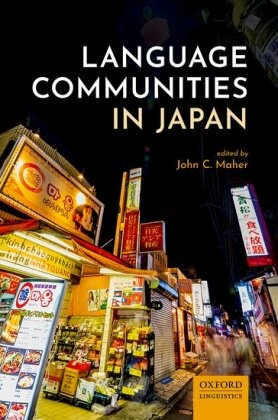
Language Communities in Japan
| Verlag | Oxford University Press |
| Auflage | 2022 |
| Seiten | 268 |
| Format | 16,3 x 24,0 x 2,5 cm |
| Print PDF | |
| Gewicht | 542 g |
| Artikeltyp | Englisches Buch |
| EAN | 9780198856610 |
| Bestell-Nr | 19885661EA |
This book provides a comprehensive overview of the rich linguistic diversity in Japan. Each chapter explores the history and current status of a specific language community, including indigenous languages such as Ryukyan, community languages such as Chinese and Portuguese, and languages of modernization and culture, such as English and French.
This book offers a comprehensive sociolinguistic overview of the linguistic situation in Japan. Contemporary Japan displays rich linguistic diversity, particularly in urban areas, but the true extent of this diversity has often been overlooked. The contributors to this volume provide a new perspective, with detailed accounts of the wide range of languages spoken in different contexts and by different communities across the Japanese archipelago. Each chapter focuses on a specific language community, and systematically explores the history of the variety in Japanese culture and the current sociolinguistic situation. The first part explores the indigenous languages of Japan, including the multiple dialects of Japanese itself and the lesser-known Ryukyan and Ainu languages. Chapters in Part II look at community languages, ranging from the historic minority languages such as Korean and Chinese to the languages spoken by more recent migrant communities, such as Nepali, Filipino, and Per sian. The final part examines languages of culture, politics, and modernization, from the use of English in international business and education contexts to the ongoing use of Latin and Sanskrit for religious purposes. The volume sheds new light on Japan's position as an important multilingual and multicultural society, and will be of interest to scholars and students not only of Japanese and sociolinguistics, but of Asian studies and migration studies more widely.
Rezension:
This collection is a 'must have' for undergraduate and graduate Japanese sociolinguistics courses. It is also an excellent source for anyone who is interested in language situations and multilingualism. Yumiko Ohara, University of Hawai'i at Hilo
